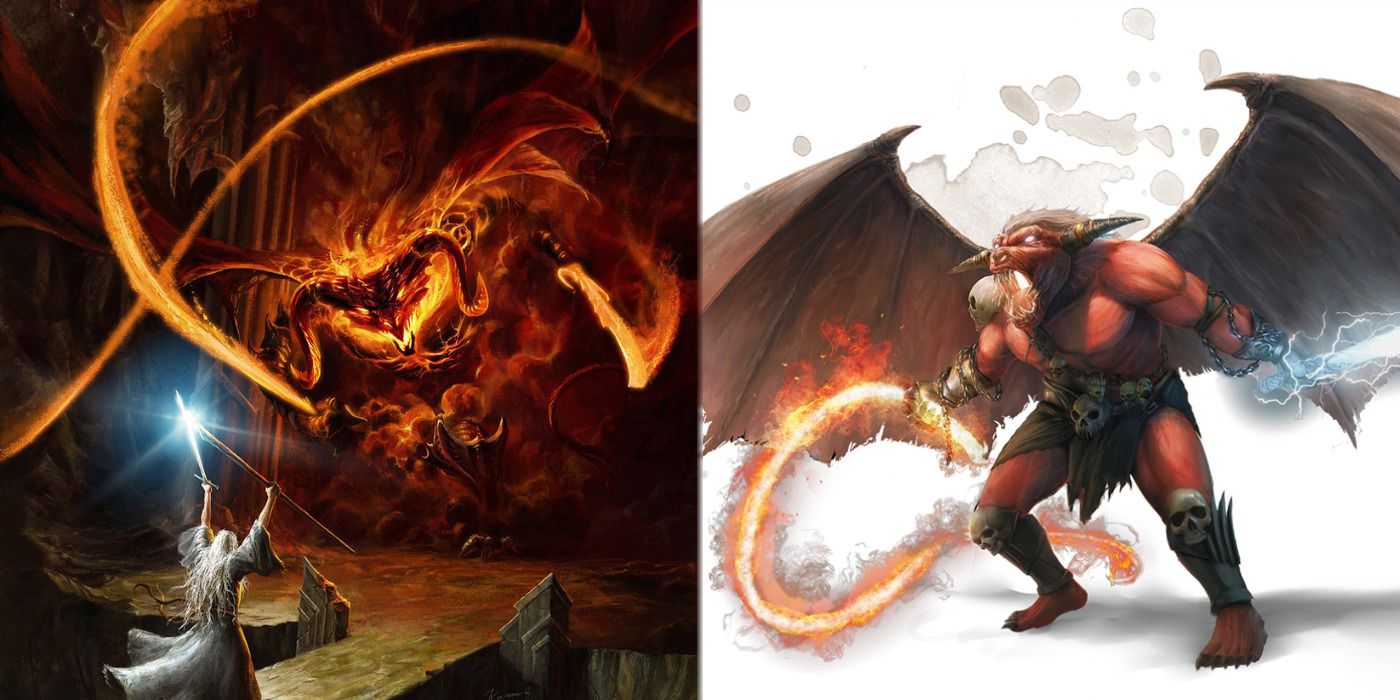

Understandably, D&D has traditionally downplayed this link to avoid litigations, with its creators remarking that they had only made reference to the Lord of the Rings from a marketing perspective. In terms of its world and characters - rather than its storyline and methods of play - D&D was therefore very much influenced by the world of the Lord of the Rings.

Hobbits became Halflings, Nazgûl became Wraiths, Ents became Treants and Balrogs became Balor.

The result of this obvious lifting in characterisation drew a lawsuit against D&D for plagiarising names and characters, after which they were forcibly changed. What’s more, the Ranger class itself was markedly taken from the character of Aragorn, with class traits like scrying resembling palantir use in the Lord of the Rings. And just as they had done in the novels, Dwarves made sturdy fighters, Hobbits made good thieves and Elves made good rangers. Some of the most obvious Lord of the Rings influences are found in Dungeons & Dragons’ original character races, creatures and classes: Hobbits, Elves, Dwarves and Humans were included, with monsters such as Balrogs and Ents - which are highly unique to the Lord of the Rings - also being featured in the game. Concepts such as good vs evil or light vs dark are of course not original to the Lord of the Rings, but they may have fed through the filter of character and race traits into the alignment system of D&D. Nevertheless, the world of the Lord of the Rings itself has been influenced by a whole host of historical myths and legends of Norse, Greek, Germanic and Finnish origin, having been conceived as an attempt to create an English national mythology which therefore borrows far and wide. Given that the Lord of the Rings was so immensely popular in the fantasy genre during the decades surrounding D&D’s creation, this inevitably seeped into the creation of the game and was ever-present in the imagination of those that played it. The fantasy landscape of the 1970s was therefore heavily influenced by the Lord of the Rings, with The Silmarillion - a collection recounting the history and mythology of the universe of Eä, including the land of Middle-Earth - being posthumously released in 1977. The result was a wave of pastiche fantasy novels that took from the series’ literary world, and a number of books that have been written as a kind of response to it.

Despite being published in the 1950s, however, the Lord of the Rings only really became popular in the 1960s, when it received an immense public response in the United States, particularly on college campuses. Tolkien’s rich fantasy world, on the other hand, first reached the general public with The Hobbit (1937) and was followed by The Lord of the Rings (1954-1955), predating D&D by several decades. The importance of the Lord of the Rings to the genre of fantasy literature and culture as a whole has proved particularly enduring – providing a mature template for deep world-building, and laying out tropes in fantasy storytelling that felt real and historic.


 0 kommentar(er)
0 kommentar(er)
